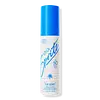What's inside
What's inside
 Key Ingredients
Key Ingredients

 Benefits
Benefits

 Concerns
Concerns

 Ingredients Side-by-side
Ingredients Side-by-side

Water
Skin ConditioningEthylhexyl Palmitate
EmollientGlycerin
HumectantIsododecane
EmollientDiethylhexyl Carbonate
EmollientIsohexadecane
EmollientPolyglyceryl-4 Diisostearate/Polyhydroxystearate/Sebacate
EmulsifyingPolymethylsilsesquioxane
Trimethylsiloxysilicate
EmollientSodium Chloride
MaskingC13-15 Alkane
SolventSodium Hyaluronate
HumectantSqualane
EmollientNiacinamide
SmoothingCentella Asiatica Leaf Extract
Skin ConditioningTocopheryl Acetate
AntioxidantTocopherol
AntioxidantPersea Gratissima Oil
Skin ConditioningCamellia Sinensis Leaf Extract
AntimicrobialCarthamus Tinctorius Seed Oil
MaskingGlycine Soja Oil
EmollientEthylhexylglycerin
Skin ConditioningHydrogenated Vegetable Oil
EmollientSilica
AbrasiveAlumina
AbrasiveDisteardimonium Hectorite
StabilisingMagnesium Oxide
AbsorbentPropylene Carbonate
SolventZinc Stearate
Cosmetic ColorantBoron Nitride
AbsorbentSodium Benzoate
MaskingPotassium Sorbate
PreservativeCaprylyl Glycol
EmollientPhenoxyethanol
PreservativeTitanium Dioxide
Cosmetic ColorantIron Oxides
Water, Ethylhexyl Palmitate, Glycerin, Isododecane, Diethylhexyl Carbonate, Isohexadecane, Polyglyceryl-4 Diisostearate/Polyhydroxystearate/Sebacate, Polymethylsilsesquioxane, Trimethylsiloxysilicate, Sodium Chloride, C13-15 Alkane, Sodium Hyaluronate, Squalane, Niacinamide, Centella Asiatica Leaf Extract, Tocopheryl Acetate, Tocopherol, Persea Gratissima Oil, Camellia Sinensis Leaf Extract, Carthamus Tinctorius Seed Oil, Glycine Soja Oil, Ethylhexylglycerin, Hydrogenated Vegetable Oil, Silica, Alumina, Disteardimonium Hectorite, Magnesium Oxide, Propylene Carbonate, Zinc Stearate, Boron Nitride, Sodium Benzoate, Potassium Sorbate, Caprylyl Glycol, Phenoxyethanol, Titanium Dioxide, Iron Oxides
Butyl Methoxydibenzoylmethane 2.9%
UV AbsorberEthylhexyl Salicylate 4.9%
UV AbsorberOctocrylene 9.5%
UV AbsorberAlcohol
AntimicrobialAloe Barbadensis Leaf Extract
EmollientBisabolol
MaskingButyloctyl Salicylate
Skin ConditioningButyrospermum Parkii Oil
EmollientCaffeine
Skin ConditioningCamellia Sinensis Leaf Extract
AntimicrobialCarthamus Tinctorius Seed Oil
MaskingChlorella Vulgaris Extract
Skin ConditioningNelumbo Nucifera Extract
Skin ConditioningCucumis Sativus Seed Oil
EmollientDiisooctyl Succinate
EmollientEthyl Ferulate
AntioxidantEthylhexyl Methoxycrylene
Skin ConditioningParfum
MaskingMusa Sapientum Fruit Extract
Skin ConditioningPassiflora Edulis Seed Oil
EmollientPolyester-8
Skin ConditioningTocopherol
AntioxidantVa/Butyl Maleate/Isobornyl Acrylate Copolymer
Water
Skin ConditioningButyl Methoxydibenzoylmethane 2.9%, Ethylhexyl Salicylate 4.9%, Octocrylene 9.5%, Alcohol, Aloe Barbadensis Leaf Extract, Bisabolol, Butyloctyl Salicylate, Butyrospermum Parkii Oil, Caffeine, Camellia Sinensis Leaf Extract, Carthamus Tinctorius Seed Oil, Chlorella Vulgaris Extract, Nelumbo Nucifera Extract, Cucumis Sativus Seed Oil, Diisooctyl Succinate, Ethyl Ferulate, Ethylhexyl Methoxycrylene, Parfum, Musa Sapientum Fruit Extract, Passiflora Edulis Seed Oil, Polyester-8, Tocopherol, Va/Butyl Maleate/Isobornyl Acrylate Copolymer, Water
 Reviews
Reviews

Ingredients Explained
These ingredients are found in both products.
Ingredients higher up in an ingredient list are typically present in a larger amount.
Camellia Sinensis Leaf Extract is derived from the leaves of the tea plant. Black tea, green tea, and oolong tea are all harvested from this plant.
This ingredient has many skin benefits:
This ingredient contains polyphenols, a strong antioxidant. Antioxidants help fight off molecules that damage skin cells.
On top of that, the antioxidants in green tea neutralize free-radicals from the sun. This gives the skin some extra UV protection, but should not replace sunscreen.
Many components of tea have anti-inflammatory properties.
Polyphenols and L-theanine help soothe the skin and reduce irritation. The caffeine in Camellia Sinensis Leaf Extract helps calm inflamed blood vessels.
Other compounds found in tea include: Vitamin Bs, linoleic acid, magnesium, calcium, iron, and zinc.
Research has shown both drinking Camellia Sinensis Leaf Tea and applying it to the skin can help boost skin elasticity and hydration. Studies also show using tea extract may reduce sebum, or oil, production.
Learn more about Camellia Sinensis Leaf ExtractCarthamus tinctorius seed oil comes from safflower, one of humanity's oldest crops.
Safflower seed oil contains a high percentage of linoleic acid and oleic acid. It also contains Vitamin E. These three components are effective moisturizers.
Vitamin E helps nourish your skin's lipid barrier. It is also a potent antioxidant. Antioxidants help fight free-radical molecules, or unstable molecules that may damage your skin cells.
Due to its high fatty acid content, this ingredient may not be malassezia folliculitis safe.
Thoughout history, safflower has been used for dying fabrics and in food as a saffron substitute.
Learn more about Carthamus Tinctorius Seed OilTocopherol (also known as Vitamin E) is a common antioxidant used to help protect the skin from free-radicals and strengthen the skin barrier. It's also fat soluble - this means our skin is great at absorbing it.
Vitamin E also helps keep your natural skin lipids healthy. Your lipid skin barrier naturally consists of lipids, ceramides, and fatty acids. Vitamin E offers extra protection for your skin’s lipid barrier, keeping your skin healthy and nourished.
Another benefit is a bit of UV protection. Vitamin E helps reduce the damage caused by UVB rays. (It should not replace your sunscreen). Combining it with Vitamin C can decrease sunburned cells and hyperpigmentation after UV exposure.
You might have noticed Vitamin E + C often paired together. This is because it is great at stabilizing Vitamin C. Using the two together helps increase the effectiveness of both ingredients.
There are often claims that Vitamin E can reduce/prevent scarring, but these claims haven't been confirmed by scientific research.
Learn more about TocopherolWater. It's the most common cosmetic ingredient of all. You'll usually see it at the top of ingredient lists, meaning that it makes up the largest part of the product.
So why is it so popular? Water most often acts as a solvent - this means that it helps dissolve other ingredients into the formulation.
You'll also recognize water as that liquid we all need to stay alive. If you see this, drink a glass of water. Stay hydrated!
Learn more about Water